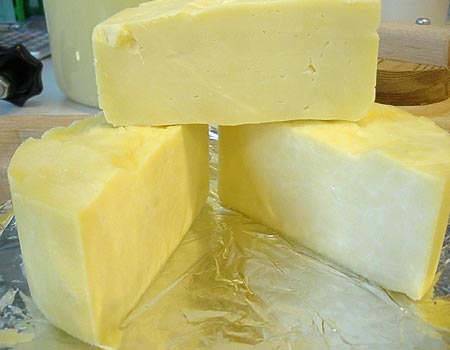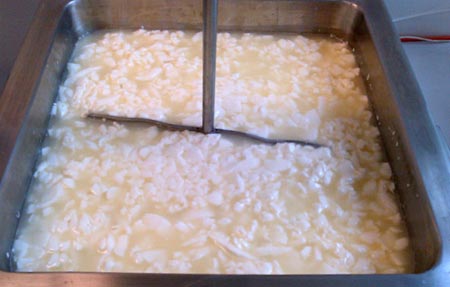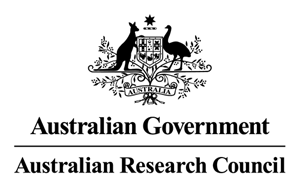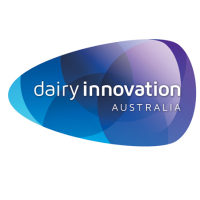About

The ARC Dairy Innovation Hub seeks to address some of the major research and technical challenges identified as constraints to business growth and productivity in the dairy manufacturing sector.

The ARC Dairy Innovation Hub brings together two of Australia’s leading dairy research groups, the University of Melbourne and the University of Queensland together with industry stakeholders Dairy Innovation Australia Limited (DIAL) and Food Innovation Australia Limited (FIAL) and dairy manufacturers — in a five-year research program co-funded by the Australian Research Council (ARC).
The Hub was established in early 2014, following receipt of a grant of $5 million from the ARC Industrial Transformation Research Program (ITRP) in May 2013. The ARC Dairy Innovation Hub was one of the first ITRP grants awarded nationally. The $5 million dollar ARC grant leverages additional cash and in-kind contributions from industry, the University of Melbourne and the University of Queensland delivering a total budget of $12 million to the research program over its five year duration.

Six of Australia’s most prominent dairy manufacturing companies, representing 70% of Australia’s milk production have co-invested in the ARC Dairy Innovation Hub. Working together through the Hub’s Industry Advisory Committee, dairy processors help direct research projects, participate in on-site case studies and where appropriate provide product for analysis making this a truly industry focused Hub.
The Hub has been structured to address some of the major dairy research and technical challenges that DIAL and its member companies have identified as constraints to business growth and productivity in the dairy manufacturing sector. The Hub program comprises six integrated, strategic research themes, employing innovative science and engineering approaches to address the technical challenges for the dairy manufacturing industry. Under the leadership of the Hub Director, Professor Sally Gras, theme leaders from the University of Melbourne and the University of Queensland take responsibility for projects in their specialist areas. Each project involves multiple investigators from the two universities, leveraging synergies between research teams. International collaboration also provides access to skills and technologies developed overseas to achieve the Hub’s objectives.
The Dairy Innovation Hub at The University of Melbourne extends and builds on the work of the ARC Dairy Innovation Hub. Further information can be found at:
Dairy innovation
Research themes
-
Microstructure
Led by Professor Sally Gras from the University of Melbourne, the Microstructure theme applies high resolution microscopic techniques to characterise dairy products including milk, cheese, yoghurt and dairy powders. This information is then correlated with results from chemical and physical testing and other indicators of product quality. These techniques are being used to improve our understanding of the structure of existing products and to assist Australian dairy manufacturers in the development of new products with novel properties, such as extended shelf-life or improved texture for domestic and export markets. Microstructural methods can also be used to examine the effect of changes in unit operations or the effect of equipment or process upgrades on product properties. The results of such studies can be used to develop technical guidelines for lower-cost formulations and to reduce waste by better prediction and control of undesirable processing effects during product manufacture.
-
Process innovation
The Process innovation theme focuses on new separation technologies and methods for the prevention of equipment fouling.
Led by Professor Sandra Kentish from the University of Melbourne, the Separation Technologies research focuses on commercial and emerging separation technologies to improve the recovery of dairy products and reduce both waste disposal costs and environmental impact. The work includes scoping studies of separation technologies not previously applied to dairy streams, such as membrane distillation and capacitive deionisation for recovery of salt and charged proteins from dairy solutions. Advanced nanofiltration technology and electrodialysis are also being studied as potential methods for salt reduction and for the removal of lactic acid from acid whey.
Led by Professor David Dunstan from the University of Melbourne, the Anti-Fouling research has focused on developing an anti-fouling coating technology with significantly improved anti-fouling properties in dairy processing applications. The anti-fouling coating has the potential to reduce cleaning time/complexity and prevent a reduction in the overall heat transfer coefficient during operation compared to an uncoated surface. This project offered industry partners the opportunity to test, implement, and further develop anti-fouling technology at laboratory and pilot-scale. This project is completed.
Led by Assoc Prof Greg Martin from the University of Melbourne, the Dairy Waste Streams research aims to assess the potential of emerging pathways for reducing the costs associated with disposal of organic dairy waste streams and the potential to generate additional value for our manufacturing partners. Reducing and utilising waste is a priority for dairy processors to improve environmental sustainability. A wide range of potential technologies may be used to biologically convert wastes into energy and products but the complex and varied nature of dairy wastes makes an assessment of the best strategy for waste utilisation a challenge. This project will work with a range of Australian dairy manufacturers to identify and prioritise methods for waste utilisation that are both practical and cost effective.
-
Functionalised milk streams
Led by Assoc Prof Greg Martin and Professor Muthupandian Ashokkumar from the University of Melbourne, the Functionalised Milk Streams theme aims to develop milk streams with novel functionalised properties to improve the value of existing processes and product lines involved in dairy production. The application of upstream process inventions, such as microfiltration, double emulsions, ultrasound and homogenisation to control the interactions of casein micelles, whey protein and fat globules is being investigated to improve the yield, quality and consistency of low-fat Cheddar and cream cheese products and the stability and shelf-life of UHT dairy beverages. This work involves understanding the interplay and implications between dairy fats and proteins within these novel dairy products that have been developed using the aforementioned technologies.
-
Ingredient innovation
Led by Professor Bhesh Bhandari from the University of Queensland, the Ingredient Innovation theme focuses on using innovative processing technologies to create dairy ingredients with new and enhanced functionalities. Nano- and micro-emulsion technologies will be used, in conjunction with milk fat fractionation, to develop new types of lipids and emulsions with highly specified physical functionality, designed to out-perform traditional dairy fats in high-value applications. Novel processes show promise to modulate the crystallisation behavior and emulsion stability of dairy fats and fat fractions. This theme will also develop higher-value ingredient applications of fractionated dairy proteins, including casein and whey protein fractions derived from both centrifugation and membrane filtration. Research will include both fundamental and application studies along with pilot scale trials, aiming to provide controllable and scalable techniques that can be translated to the dairy industry.
-
Food quality
The Food Quality theme focuses on cheese flavour research and the oral perception of dairy foods using instrumental methods.
Led by Dr Sangeeta Prakash from the University of Queensland, the Tribology research uses advanced rheological techniques to assess the interaction of surfaces in relative motion, eg: lubrication. This is an important property used to assess mouthfeel attributes, especially related to fat perception in dairy products. Traditionally performed by a trained sensory panel, this project aims to develop a quick and simple instrument-based tribology test to assess the lubrication of newly developed dairy products and those undergoing formulation. The behaviour of a variety of dairy products focusing on the effect of fat content, type and level of fat replacers will be examined. The lubrication behaviour will be compared and correlated with the sensory mouthfeel perception from a sensory panel.
Led by Assoc Prof Mark Turner from the University of Queensland, the Adjuncts Cultures research focused on the use of adjunct cultures which are added to cheese to accelerate cheese ripening and to obtain consistent or enhanced flavour. This project aimed to improve productivity for cheese manufacturers through the use of adjunct cultures by reducing maturation times, adding mature flavour profiles, and reducing the cost for adjunct cultures. A fast screen method based on flavour profiling to prioritise strains from the DIAL culture collection for use in small scale cheese production was established following the development of a fast screen method using UHT milk as matrix and SPME GC-MS (solid phase microextraction gas chromatography-mass spectrometry). PCR-based methods, whole genome sequencing and phenotypic methods have been used for the characterisation of a range of fermentation strains and the results have been correlated with chemical analysis of mature cheese to evaluate and compare the strains. This screening service is currently available to industry partners on a fee-for-service basis and will allow cheese makers to access information unavailable elsewhere. This will add competitiveness to the cheese makers through better quality control and new product development and will impact on GDP, export markets and environmental outcomes. This project is completed.
-
Frothing on demand
Led by Dr Nidhi Bansal from the University of Queensland, the Frothing on Demand theme will focus on developing a fundamental understanding of milk frothing or foaming so that the frothing of liquid milk may be controlled. Frothing of milk may be either beneficial or undesirable. Frothing is beneficial when making Italian style coffee, where steam is injected into the milk to create a foam. It is also desirable in many types of ice cream mixes and some dairy desserts. Frothing, however, is not desirable in dairy processing plants such as the operation of pumping cold milk. To date, it has not been possible to identify any clear and consistent association with milk quality, composition or processing conditions or even “seasonality” that may assist in our understanding of this issue. Given the importance of the coffee milk market, this project aims to provide new technical strategies to overcome this problem and advance our understanding of the issue in general.



